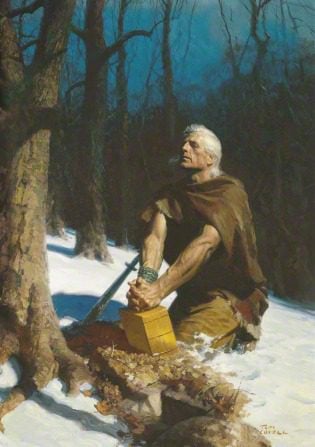
A couple of days ago, I posted a link to an item by Matt Roper titled “A New York Cumorah? Not a Hill We Have to Die On”:
http://www.patheos.com/blogs/danpeterson/2017/01/new-york-cumorah-not-hill-die.html
Among other things, Roper’s article calls attention to what is often styled the “two Cumorahs theory,” which is a common correlate of Mesoamerican limited geographical models for the Book of Mormon.
In response, a number of people have written to me saying that they believe that, excepting the early chapters of 1 Nephi, the story of the Book of Mormon took place in North America, not in South America — by which they typically mean that they follow a “Heartland” or “Great Lakes” model of Book of Mormon geography.
They’re perfectly free to follow whatever geographical model they prefer, of course. (As I like to point out, nobody’s salvation hinges on knowing the precise GPS coordinates of the Jaredite city of Lib.) But everybody should understand that adherents of a Mesoamerican setting for the Book of Mormon — such as I am, although the issue doesn’t rank especially high on my list of concerns — also believe that the Book of Mormon narrative took place chiefly in North America. Everything from Canada through the United States and Mexico down to and including Panama is typically reckoned by geographers as part of North America.
Others have written to remind me that the Latter-day Saint visitors center at the Hill Cumorah just south of Palmyra, New York, identifies that hill as a historic site and as the place where the mortal Moroni buried the plates of the Book of Mormon in AD 421. This, they seem to think, is a decisive statement by the Church of Jesus Christ of Latter-day Saints proving the “two Cumorahs theory” wrong.
Again, though, their argument seems to rest on an error. Believers in the “two Cumorahs theory” — of whom I’m one, although, yet again, the issue isn’t of pivotal importance to me — contend that the location of the final Jaredite and Nephite battles was far to the south, perhaps near Veracruz, and not in modern-day upstate New York. However, they do not deny that the glacial drumlin between Palmyra and Manchester, New York, is where Moroni buried the golden plates roughly thirty-six years after the Lamanite destruction of the Nephites.
So acceptance of the proposition that Moroni buried the plates in the hill near the later Smith family farm is shared by both “Heartland” and Mesoamerican models, and can’t be used to distinguish between them. It also can’t be used to argue that adherents of the “two Cumorahs theory” are in disagreement with official statements of the Church.
While I’m at it, too, here is an interesting exchange on the question of a New York or Mesoamerican Cumorah between Andrew Hedges and Matt Roper:
“Cumorah and the Limited Mesoamerican Theory”
“Plausibility, Probability, and the Cumorah Question”
“Problems with Probability: A Response”
I like the irenic tone of the exchange. This topic doesn’t merit anger, irritation, or mutual excommunication. It’s very important, in my view, to believe that the story of the Book of Mormon peoples took place. The question of where that story took place, though, while interesting and far from trivial, is of considerably less importance.










